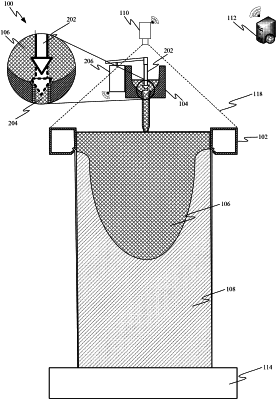| CPC B22D 11/185 (2013.01) [B22D 11/049 (2013.01); B22D 11/141 (2013.01); B22D 11/204 (2013.01)] | 17 Claims |

|
1. A system for monitoring a casting operation, the system comprising:
a mold defining an opening to receive molten metal;
a launder configured to deliver the molten metal to the mold during the casting operation;
a camera having a field of view and configured to capture optical data associated with the casting operation; and
a controller comprising a processor configured to execute instructions stored on a non-transitory computer-readable medium in a memory, the controller causing the processor to perform processor operations including:
receiving the optical data associated with the casting operation;
generating, based on at least the optical data, a profile associated with the casting operation;
comparing the profile with a baseline profile; and
determining, based on the comparing, whether a particular event has occurred.
|
|
11. A method of monitoring a mold, comprising:
initiating a casting operation using one or more pieces of equipment of a casting system including the mold and a launder, the casting operation comprising one or more actions that cause or facilitate molten metal flowing from the launder into the mold;
capturing, using a camera, first optical data associated with at least one of the one or more pieces of equipment;
generating, based on the first optical data, a profile associated with the at least one of the one or more pieces of equipment;
comparing the profile with a baseline profile; and
determining, based on the comparing, whether a particular event has occurred.
|